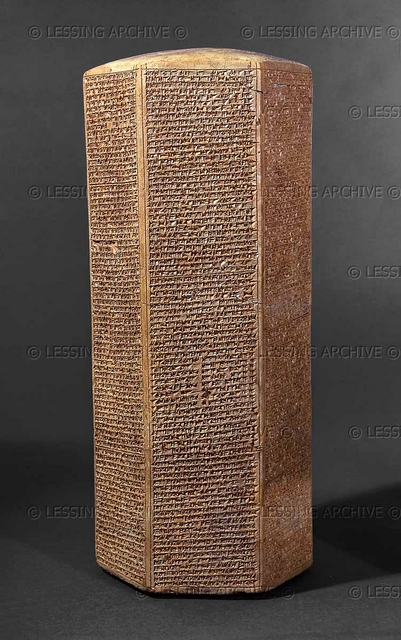by hadassah | Aug 3, 2016 | Exodus
The shoals in the sea of archaeology are treacherous indeed. Take the case of Marie-Louise Buhl. Ms. Buhl, a Keeper of the National Museum of Denmark, recently wrote part of the final report on the Danish excavations at Shiloha. Ms. Buhl’s task was admittedly...
by hadassah | Mar 30, 2016 | Exodus
Archaeologists have discovered a tomb they believe was the burial place of Ramesses II’s sons, in the Valley of the Kings, the necropolis at Karnak some 300 miles south of Cairo. The huge tomb complex, dubbed Tomb 5, is many times larger than any other tomb so far...

by hadassah | Jan 22, 2009 | Exodus
Sennacherib Ravages Judah “As for Hezekiah, the Judean, he did not submit to my yoke. I laid siege to 46 of his fortified cities, walled forts and to the countless small villages in their vicinity …. I led off 200,150 people, young and old, male and female, horse,...
by hadassah | Jan 22, 2009 | Exodus
A handle from a Late Bronze Age store jar (13th century BCE) containing three incised letters in Proto-Canaanite script, the earliest known alphabet. Found during the 1976 pilot season at Tell Halif. “How a Dig Begins,” BAR Jun 1977. See also- In the Path of...
by hadassah | Jan 20, 2009 | Exodus
The Re-population of Samaria “I repopulated Sameria more than before. I brought into it people from countries conquered by my hands. I appointed my eunuch as governor over them. And I counted them as Assyrians.” Nimrud Prism “The king of Assyria brought...

by hadassah | Jan 20, 2009 | Exodus
Bringing Water Inside Jerusalem’s Walls When Hezekiah saw that Sennacherib had come, intent on making war against Jerusalem, he consulted with his officers and warriors about stopping the flow of the springs outside the city, and they supported him. (2 Chronicles...

